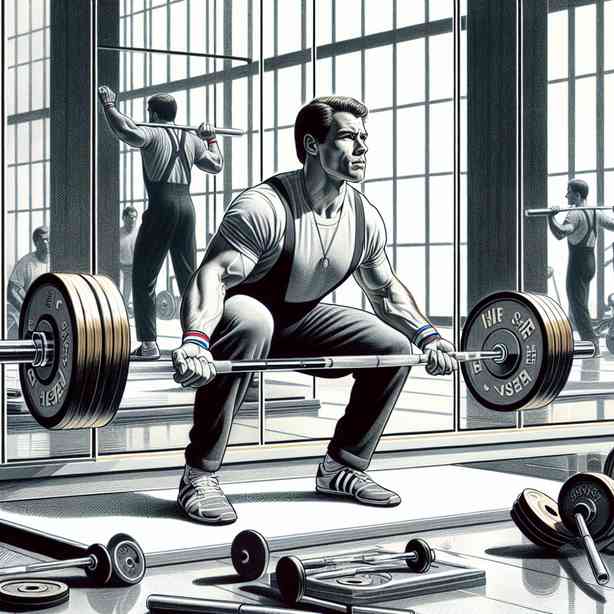
Lifting weights is an essential part of many fitness routines, but what happens when you do it without the aid of a mirror? The concept of lifting without a mirror may seem unusual, especially in a society where quick self-assessments are often made by glancing at our reflections. However, there are significant benefits to training without visual feedback. This approach can enhance your focus on muscle activation, improve your mental connection with your body, and even promote better overall performance.
When you lift weights in front of a mirror, it’s easy to become fixated on your appearance, checking your form and physique throughout your workout. While this can be useful at times, it may also lead to distractions that detract from the effectiveness of your training. On the contrary, lifting without a mirror forces you to cultivate a deeper awareness of your body and its movements. Instead of relying on visual cues, you will need to pay more attention to the sensations in your muscles and your overall body alignment.
One of the critical aspects of lifting weights is maintaining proper form. When you focus on how your body feels, rather than how it looks, you can achieve a more intuitive understanding of what correct form feels like. This mental connection is vital for developing muscle memory, which ultimately allows you to perform movements correctly and efficiently over time. By engaging both your body and mind, you not only improve your technique but also commit it to memory, leading to better long-term results.
Training without a mirror can also foster a more mindful approach to fitness. It encourages you to be present in the moment and to listen to your body. This mindfulness can help you recognize when you are pushing yourself too hard or when you’re not challenging yourself enough. By being more attuned to your body’s signals, you can adjust your workouts accordingly and avoid injury. This is particularly important for beginners, who may not have a clear understanding of their limits just yet.
Moreover, lifting without a mirror can increase your confidence in your abilities. When you remove the visual element from your training, you might find yourself more willing to push your limits, try new techniques, or challenge yourself with heavier weights. The lack of superficial distractions allows you to concentrate on your strength and capabilities rather than any insecurities about your appearance. This can be empowering and lead to substantial gains in physical strength and mental resilience.
Another benefit of this approach is the opportunity to enhance your body awareness. Lifting without a mirror compels you to develop a better understanding of your body’s mechanics and how it moves in space. As a result, you can begin to identify imbalances and areas that may need extra attention, leading to more balanced muscular development over time. This newfound insight can also aid your performance in other physical activities, as the connection between mind and body becomes stronger.
Incorporating this strategy into your training can be as simple as changing your environment. Choose a gym area that lacks mirrors or find an outdoor space where you can lift weights without any reflective distractions. Alternatively, consider wearing a blindfold or closing your eyes during specific exercises to fully engage with how your body feels while lifting. This not only alleviates visual distractions but also strengthens your ability to focus on what really matters: performing your lifts effectively.
As you adjust to lifting without a mirror, you will likely encounter challenges along the way. Your first workout may feel disorienting or awkward, but don’t allow that to deter you. Remember that building a new skill takes time and patience. Keep encouraging yourself to focus on the physical sensations and strive for improvement with every session. Over time, you may find that your confidence grows, along with your strength, as you adjust to this mirror-free approach.
Additionally, you might want to establish a set of personalized benchmarks during your workouts, focusing on achieving specific goals rather than relying on your appearance. Setting measurable objectives, such as increasing the weight you lift or the number of repetitions you can perform, can keep you motivated. This goal-oriented mindset fosters a sense of accomplishment that transcends the visual aspect of fitness.
A critical part of this process is ensuring you stay safe and healthy while pushing your boundaries. Incorporating proper warm-ups and cooldowns into your regimen is essential. Warm-ups can prepare your muscles for the impending workload, reducing the risk of injury, while cooldowns help maintain flexibility and speed up recovery. As you lift without a mirror, you should remain vigilant about following these safety protocols to maintain your overall health.
Engaging in mindful lifting techniques can also complement your workouts. Consider incorporating breathing exercises, which can help you maintain focus throughout the lift. Deliberate breaths can enhance your lifting capacity by oxygenating your muscles and improving your overall endurance. Pairing breath control with a mind-body connection will ultimately lead to better performance and progress.
Lastly, don’t forget to keep track of your progress. Since you won’t be constantly assessing yourself in the mirror, you might find it helpful to use a journal or an app to document your workouts. Recording your lifts, repetitions, and feelings can help you visualize the progress you’re making over time. This practice can instill a sense of achievement and keep your motivation alive, even during challenging periods of your fitness journey.
In summary, lifting without a mirror presents an opportunity for growth on multiple levels. By shifting your focus from superficial appearances to how your body moves and feels, you can deepen your understanding of weight training and enhance your performance. Just remember to stay safe, listen to your body, and embrace the mental shift that comes from this new approach. Ultimately, the journey of fitness is not solely about how we look in the mirror, but rather about the strength, resilience, and confidence we build along the way.


